Business & tech
6 tips for building a more collaborative virtual team
Big businesses aren’t the only ones benefitting from virtual teams.
Thanks in large part to freelance marketplaces, such as Upwork.com, traditional brick-and-mortars, mom and pops, and startups are now able to rapidly staff up with team members from across the globe.
Although virtual teams offer a number of tangible benefits to your business, they do have their share of distinct challenges. In particular, many companies struggle to create a truly “collaborative” virtual culture.
In this post, we’ll explore a few best practices for using Insightly to boost engagement among your virtual workers.
1. Get Everyone In the Same Place
Emails…group chats…random to-do lists…shared project documents…customer tracking spreadsheets.
Unless instructed otherwise, remote workers have a tendency to spread information across multiple systems and inboxes. Although productivity may seem high, it’s impossible to know for sure. After all, you don’t have time to dig through the many different apps they’re using. Likewise, it would be wasteful to ask each team member to manually cobble together a report. Unfortunately, you’ll just have to assume things are operating smoothly.
Solving this problem requires you to first take control of the situation. Even though your team has your best intentions in mind, reliance on overlapping systems or siloed datasets is no longer going to cut it. You need everyone working from the same system and database.
A system like Insightly can get everyone on the same page. Your sales team can hit the ground running by centralizing all of their customers, leads, and deals. Customer emails, notes, invoices, and quotations are also accessible from any web-enabled device.
Everyone else will love the built-in project and task management functionality. Since each team member has his or her own unique Insightly log in, you can create a greater sense of accountability. Assign due dates, define recurrence patterns, and indicate priority for each task. No more handwritten sticky notes or “forgotten” assignments.
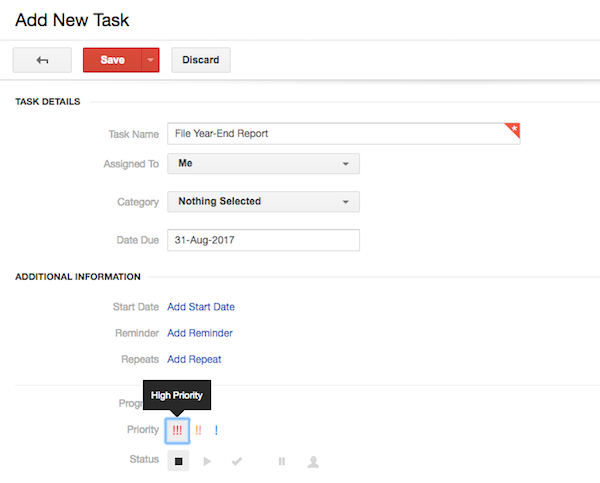

Note: Insightly also allows you to configure teams, letting you assign and manage view permissions in fewer steps.
2. Differentiate Between Projects & Tasks
Some initiatives require more collaboration than others.
For example, rebranding a website involves much greater thought and coordination than scanning a stack of paper documents. Launching a new product line is more complicated than invoicing a client. Some initiatives require multiple iterations, meetings, and collaborators to achieve the greater goal. In other words, not every delegation is as simple as making a one-time request. You therefore need a process for managing the many moving parts.
At the heart of this discussion is the differentiation between “tasks” (individual pieces of work) and “projects” (larger initiatives or desired outcomes). If you’re planning on using Insightly, this terminology is natively built into the application. In fact, you can “link” individual tasks to a larger project, making it easier to see the specific steps required to arrive at your end goal.
Projects can be structured one of two ways in Insightly. For initiatives following a sequential pattern (such as onboarding a new customer), using a project pipeline might work best.
For less predictable projects (such as an expansion into adjacent markets), you might consider using one or more milestones. Milestones allow you to set goals, assign dates, and group together related tasks – without the rigidity of a sequential pattern.
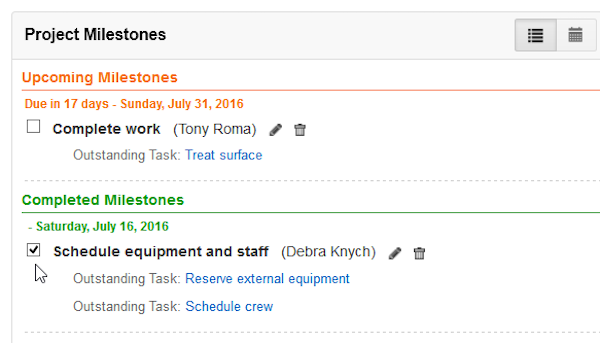
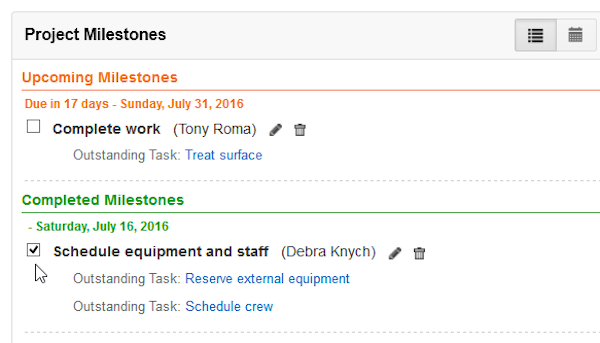
With milestones, pipelines, and tasks, your team will feel more organized and less scattered. As the business owner, you’ll appreciate the enhanced visibility into your company’s work-in-process, bottlenecks, and completed work.
3. Integrate, Integrate, Integrate
Migrating your project and sales processes into a single web-based application is a great starting point. However, even the most robust of platforms can’t do everything. Your team will still rely heavily on their email inboxes, document processors, marketing tools, and other third-party apps.
A highly integrated platform, such as Insightly, can offer the best of both worlds. Insightly actually acts as the “hub” for everything else your team uses.
Take, for example, your marketing consultant who uses the MailChimp email marketing software to build and send the company newsletter. He’s doing a nice job, but he occasionally forgets to prepare the summary reports that you need. This situation reduces the productivity of your strategy sessions and creates unnecessary friction for the entire team.
How can you make this problem go away?
One possibility is to connect your Insightly and MailChimp accounts. Insightly’s innovative integration pulls in highly valuable marketing analytics into each lead or contact record. Once enabled, you’ll be able to see real-time MailChimp data without ever leaving your Insightly account, such as:
- Campaign history
- Click rate
- Open rate
- Engagement history
- Opt-in / subscription date
- List membership
Problem solved! Now, your marketing consultant can stay focused on the next newsletter, and you have the information you need.
Better yet, Insightly integrates with dozens of other best-in-class apps. The possibilities seem endless.
4. Build “Links” Between Internal (& External) Relationships
Organizational charts become murky as you grow your team of freelancers, part-time staff, consultants, and employees. Who reports to whom? Solid line or dashed? The questions never seem to end.
It’s time to scrap the diagram software and leverage the info that’s already in Insightly. If you’ve already added your team as Insightly users, you can easily use relationship links to track your organizational structure.
Each user can be linked to other internal (or external) team members, offering a 360-degree view of who knows whom. Insightly’s relationship dropdown lets you identify:
- Boss / direct report relationships
- Client / consultant relationships
- Colleague relationships
- Other unique relationships
This type of linking also comes in handy for tracking your customer relationships. By tracking the organizational hierarchy of your customers, your sales reps and support staff will be more equipped to deliver an unbelievable experience.
5. Free Up More Time for Collaboration (with Automation)
Just because something needs to be done, it doesn’t mean that a human has to do it. As workflow technology and artificial intelligence become increasingly prevalent, business owners are seeking ways to maximize their investment in human capital – virtual team members included.
A tool like Insightly can help you maximize ROI from virtual staff via automation.
To illustrate my point, let’s look at your current web lead management process. If you’re like many business owners, your web developer probably configured your site to send email alerts for new leads. New lead data is keyed in by your virtual assistant, the lead is assigned for follow up, and then your reps finally reach out. All of this occurs over several hours (or days), during which leads can go completely cold.
By leveraging Insightly automation, you could build a better lead management model. How does the following workflow sound?
- The lead fills out a form on your website.
- Insightly automatically parses the lead information and creates a new record.
- Insightly immediately sends an email that “looks like” it came from your sales rep.
- Insightly assigns the lead (and a follow-up task) to the correct rep.
Instead of wasting time on data entry, your virtual assistant can finally get around to organizing your backlog of game-changing ideas. In addition, your reps can engage leads with much less effort.
6. Monitor Productivity
There’s an additional benefit of using a self-contained management system like Insightly: better business analytics. Each task, project, contact, lead, opportunity, and event is a trackable piece of data that’s easily modeled within Insightly’s intuitive reporting dashboard.
- Perhaps you find yourself asking these questions:
- Which team members are completing the most tasks?
- Who is delegating the most work to other users?
- What are our bottlenecks?
- How long did certain milestones take to complete?
- Who has the most overdue tasks?
- Which projects are requiring the most effort?
- How many leads can each sales rep manage per month?
If your virtual team is using Insightly correctly, you should be able to answer these questions within seconds. Better yet, you’ll be able to sort, filter, and customize the reports to your exact specification. Just drag and drop, and Insightly gives you the data that you need.
Columnar reports can also be converted into highly engaging charts and graphs. This saves you (or your assistant) the effort of exporting and charting the data. Once again, Insightly does the busywork for you.
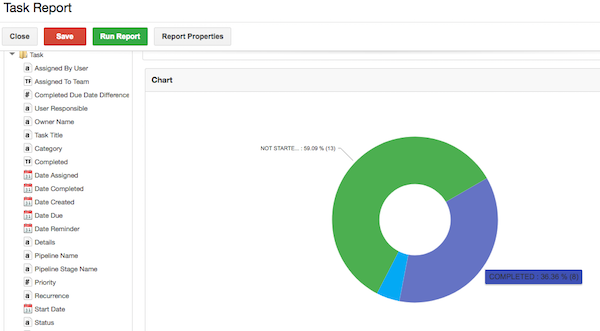
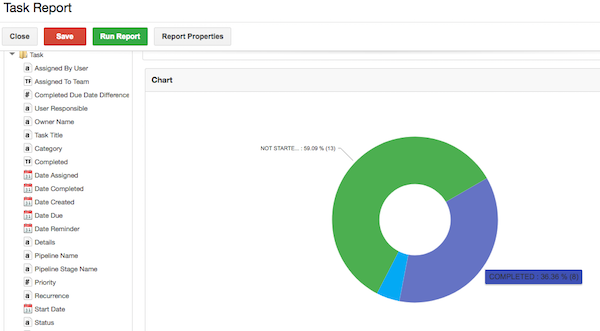
Get a More Collaborative Virtual Team
Your virtual team adds value to your business. No question about it. However, there’s always room for improvement. By leveraging a cloud-based business management system, such as Insightly, you can boost engagement and take their value to an entirely new level.
To learn more about Insightly, click here to compare the features that best fit your virtual team.